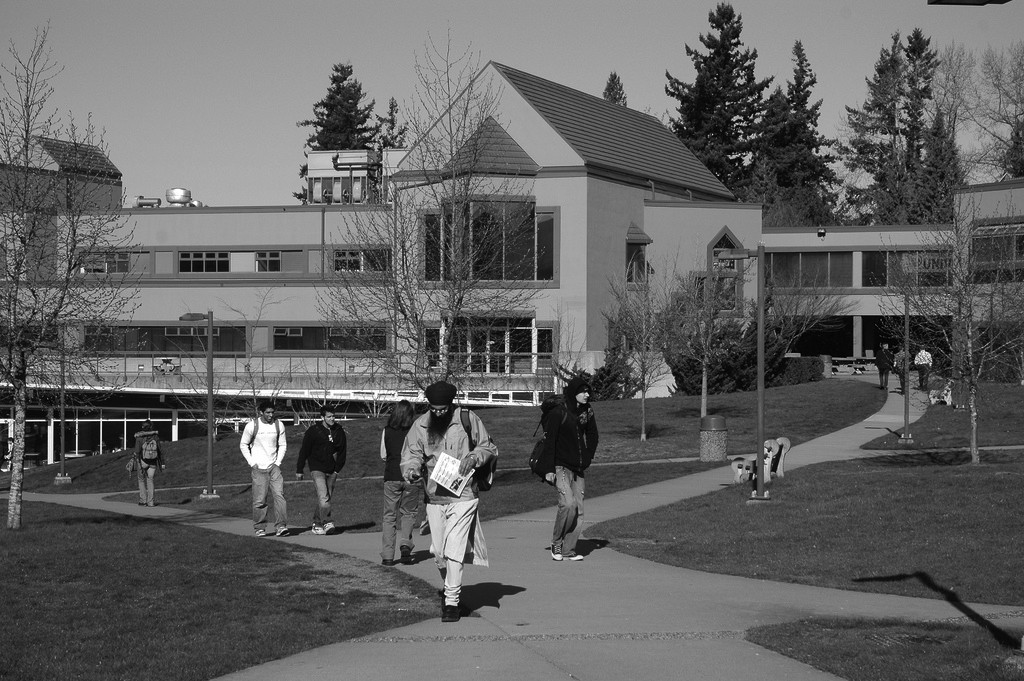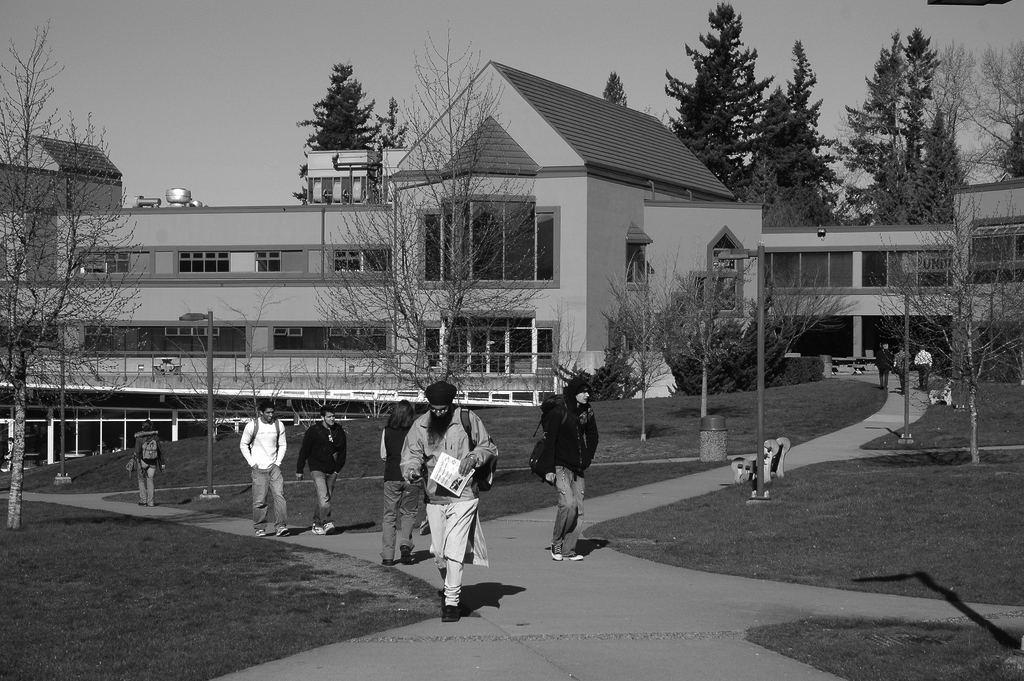
If you walk down the hall, you might occasionally notice exit signs or the odd fire extinguisher. But if it becomes time to respond to an emergency, you might have to recall what you learned in high school.
UFV supported some safety initiatives at the beginning of this semester — most notably the fire drill at the Baker House residence, its participation in the BC Shakeout, and the increase in advertising for UFV Alert. However, these are motivated and organized by the university and are not necessarily mandated or regulated by the province.
According to the BC Fire Code, only one fire drill is mandatory in post-secondary institutions. Unlike the K-12 school system that have several fire, earthquake, and lockdown drills (some at random), universities in B.C. are left to adopt their own individual emergency management practices.
Twenty-three post-secondary institutions, as well as four out-of-province institutions, meet every three months as the BC Post-Secondary Emergency Planners to discuss health and safety procedures, but these meetings are also voluntary.
UFV does not have its own emergency management program as of yet. However, UFV security is working to adopt the British Columbia Emergency Response Management System (BCERMS), based on the Incident Command System, a fire response system from the U.S. BCERMS is a training program that draws from security materials from the Justice Institute of BC, the National Wildfire Coordinating Group, the Canadian Interagency Forest Fire Centre, and the Provincial Emergency Program.
In addition to adopting emergency management systems, the director of security and emergency management, Brian Leonard, works with UFV departments to promote emergency initiatives.
“It’s about building capacity,” he says, referring to the way UFV has started practicing safety procedures more regularly throughout the years.
“I know we had a lockdown drill, I want to say in 2013 or 2014 — our first lockdown drill at the university.”
Leonard says that every year something improves — for example, in the last four years, UFV did not have designated assembly areas. This year, they do.
He says that in addition to security, logistic and facilities staff are trained in the Incident Command System, so buildings will have people to direct students, staff, and faculty in case of an emergency. Residential assistants in Baker House are also trained to handle emergencies within the campus residence. Leonard says there are about 50 wardens in total who work among UFV campuses able to respond to safety risks and warnings.
“To be honest, [students] find their way to the assembly areas,” he says. “But let’s be realistic; they’re coming from the K-12 system where they’re already used to that drilling.”
However, students are not given mandatory safety talks in classes or at orientation. It’s difficult to have every student participate in safety drills, as a majority of students are rarely on campus at the same time for an extended period of time.
For example, UFV security had to postpone the scheduled fire drills for this Wednesday, October 28 because of conflicts with midterms.
“If people want to, we’ll drill twice a year,” Leonard says. “We also want to be conscious not to disrupt [classes].”
Simpler than drills, the electronic warning system, UFV Alert, is in line with other post-secondary institutions who also take advantage of the popularity of cell phones. But out of approximately 16,000 UFV students, only 1,260 have signed up for UFV Alert. Leonard says that safety awareness comes down to a common problem within UFV as a commuter campus: student engagement.
“Lots of post-secondary [institutions] recognize that there’s a need for this,” he says. “We get as much information as we can out to the students and staff.”


